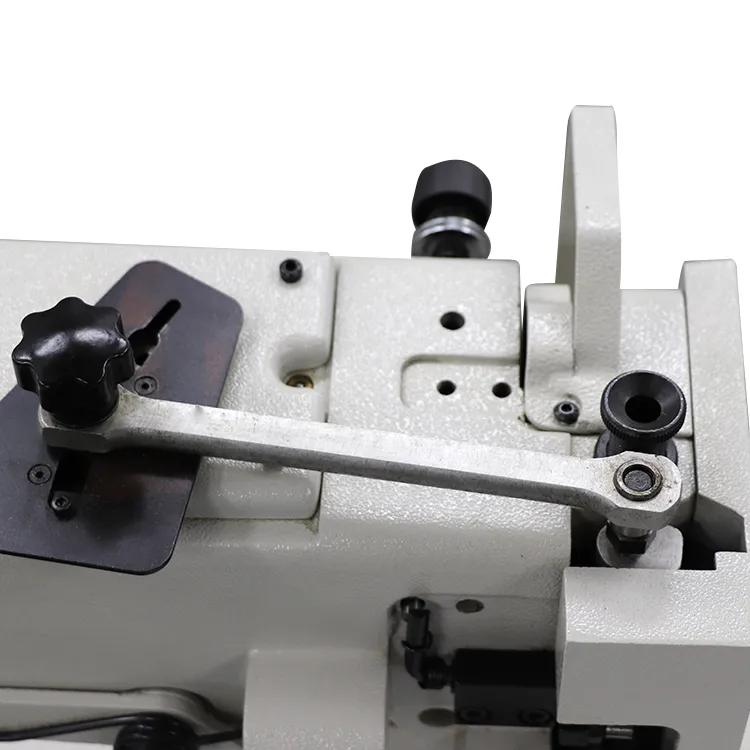Understanding the Functionality and Benefits of an Overlocker Machine
What is an Overlocker?
An overlocker, also known as a serger, is a specialized sewing machine designed to sew, trim, and finish the edges of fabric in one swift motion. It is an essential tool for anyone who is serious about sewing, particularly for those who want to produce garments with a professional finish. Overlockers are especially popular in the fashion industry and among home sewers who wish to elevate their sewing projects.
The Functions of an Overlocker
The primary function of an overlocker is to create a clean, finished seam on the edges of fabric. Unlike standard sewing machines, which typically use a straight or zigzag stitch, overlockers employ multiple threads and specialized stitch configurations to secure the fabric layers together while also trimming away excess material. This results in seams that are not only durable but also prevent fraying, making them ideal for knit fabrics, woven materials, and other types of textiles.
Most overlockers can handle various tasks, including
1. Seaming Their primary role is to sew seams, which can be straight or curved, depending on the shape of the garment. 2. Trimming Overlockers feature built-in cutters that trim the fabric edges as they sew, providing a clean finish without the need for additional tools. 3. Finishing Edges Overlockers are perfect for finishing raw edges, thus preventing fraying and ensuring that garments withstand wear and washing. 4. Serging This unique stitch allows for flexibility, making it an excellent choice for sewing stretchy fabrics like knits or jerseys.
Types of Overlockers
what is a overlocker

Overlockers come in various models, each suited for different sewing needs. The most common types include
- Two-thread Overlockers These are simpler machines that use two threads to sew seams, often employed for lightweight fabrics or when making basic garments. - Three-thread Overlockers These machines provide more versatility and are suitable for a wider range of fabrics, including knits and heavier textiles. - Four-thread Overlockers The most popular type among quilters and apparel makers, four-thread overlockers can produce robust seams combined with effective trimming, catering to both stretch and woven fabrics. - Five-thread Overlockers These advanced machines incorporate both overlock and a safety stitch feature, offering the best of both worlds for maximum durability.
Benefits of Using an Overlocker
The advantages of using an overlocker are multifaceted. Firstly, they save time by combining multiple sewing processes into one, making projects quicker to complete. Secondly, the professional quality of the finishes produced by an overlocker is hard to replicate with a standard sewing machine. Garments made with an overlocker can have a more polished look, reminiscent of store-bought clothing.
Additionally, overlockers are distinguished by their ability to work with a variety of fabrics, including knits, woven fabrics, and more challenging textiles. The adjustable settings on overlockers allow for customized tension and stitch settings, enabling the user to achieve the best results possible for each fabric type.
In Conclusion
An overlocker is a valuable investment for anyone who enjoys sewing, whether as a hobby or a profession. With its ability to seam, trim, and finish edges in one go, this powerful machine makes it easier to create high-quality garments. By incorporating an overlocker into your sewing toolkit, you'll not only enhance your sewing efficiency but also elevate the quality of your finished projects, allowing you to produce beautifully crafted garments that reflect your skills and style. Whether you're a beginner or an experienced seamstress, an overlocker could be just what you need to take your sewing to the next level.
-
Heavy Duty Leather Sewing Machine: A Must-Have for Professional LeatherworkNewsMay.28,2025
-
Leather Sewing Machine: Essential for High-Quality LeathercraftNewsMay.28,2025
-
Extra Heavy Duty Sewing Machine for Premium Leather ApplicationsNewsMay.28,2025
-
Walking Foot Cylinder Arm Sewing Machine: Precision and Power CombinedNewsMay.28,2025
-
Industrial Cylinder Arm Sewing Machine: Engineered for High-Performance StitchingNewsMay.28,2025
-
Cylinder Bed Sewing Machine: A Powerful Solution for Precision StitchingNewsMay.28,2025
-
Zigzag Sewing MachineNewsMay.12,2025





























